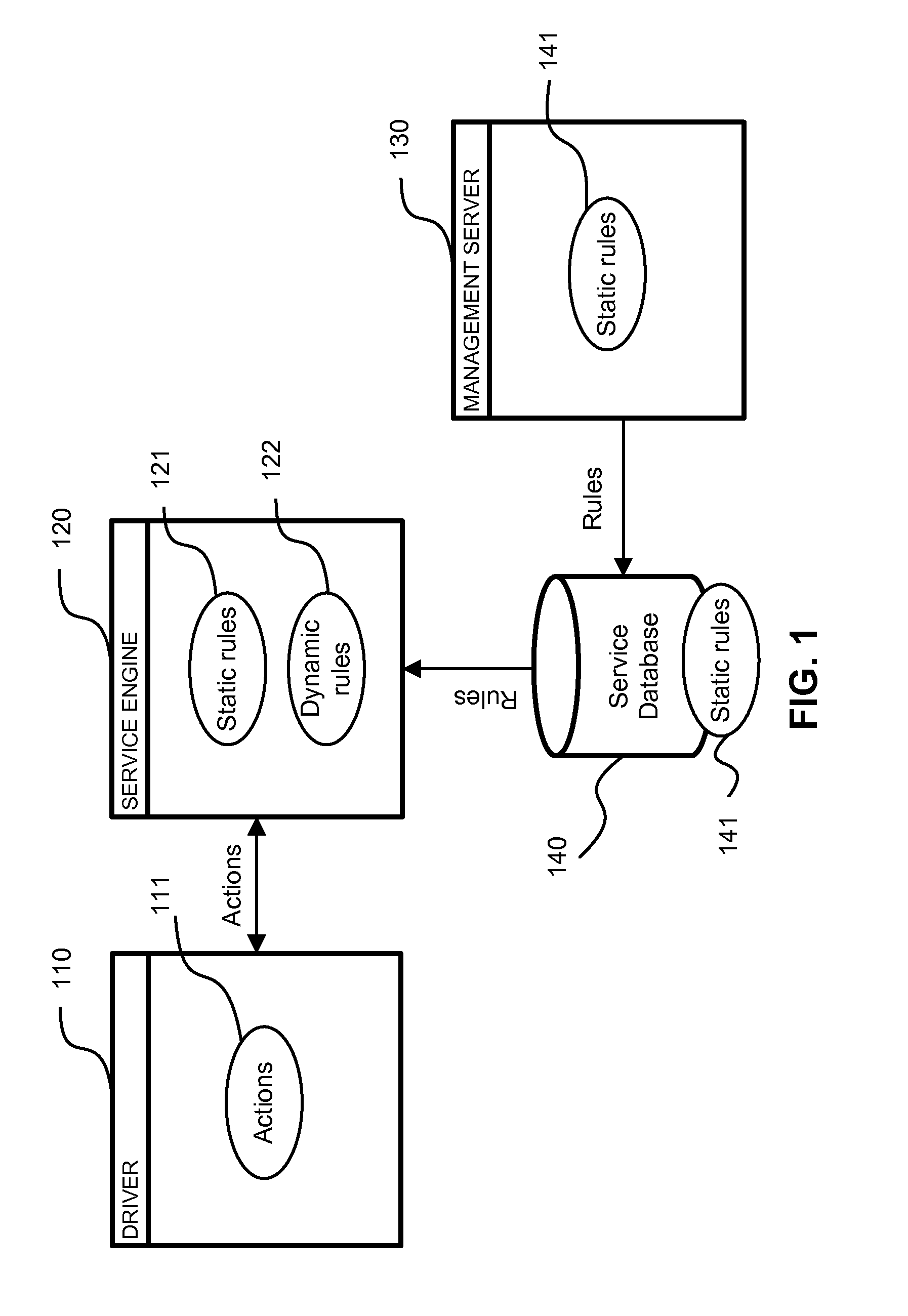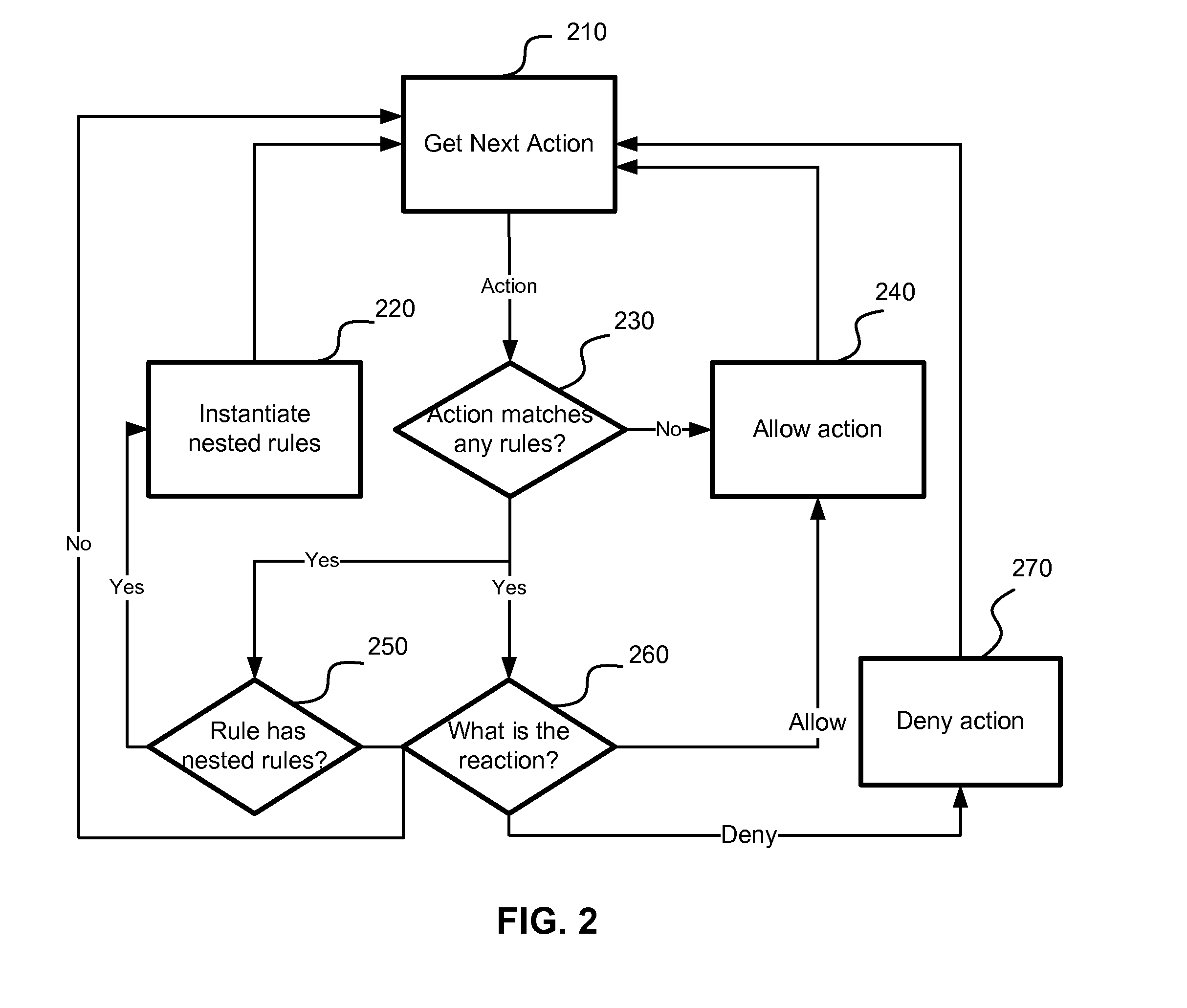Application of nested behavioral rules for anti-malware processing
a behavioral rule and anti-malware technology, applied in the field of antimalware technology, can solve the problems of significant inconvenience for computer users, service problems and loss of e-mail capability, and attempts to adequately prevent file exchange or e-mail mediated infections, and achieve the effect of saving system resources
- Summary
- Abstract
- Description
- Claims
- Application Information
AI Technical Summary
Benefits of technology
Problems solved by technology
Method used
Image
Examples
Embodiment Construction
[0026]Reference will now be made in detail to the preferred embodiments of the present invention, examples of which are illustrated in the accompanying drawings.
[0027]According to the exemplary embodiment, a method, system and computer program product for malware detection using dynamic behavioral rules are provided. In one aspect of the invention there is provided a method for implementing dynamic behavior rules for malware detection. A method of heuristic analysis of computer program execution is employed.
[0028]According to the exemplary embodiment, behavior of a computer program is monitored, analyzed and blocked (if necessary) during its execution. Actions performed or instantiated by each executable component are compared against a set of static and dynamic behavioral rules.
[0029]The behavioral rules determine whether the requested action is allowed or blocked. The system also determines which new behavioral rules are needed to be applied to future actions performed by an execu...
PUM
 Login to View More
Login to View More Abstract
Description
Claims
Application Information
 Login to View More
Login to View More - R&D
- Intellectual Property
- Life Sciences
- Materials
- Tech Scout
- Unparalleled Data Quality
- Higher Quality Content
- 60% Fewer Hallucinations
Browse by: Latest US Patents, China's latest patents, Technical Efficacy Thesaurus, Application Domain, Technology Topic, Popular Technical Reports.
© 2025 PatSnap. All rights reserved.Legal|Privacy policy|Modern Slavery Act Transparency Statement|Sitemap|About US| Contact US: help@patsnap.com



